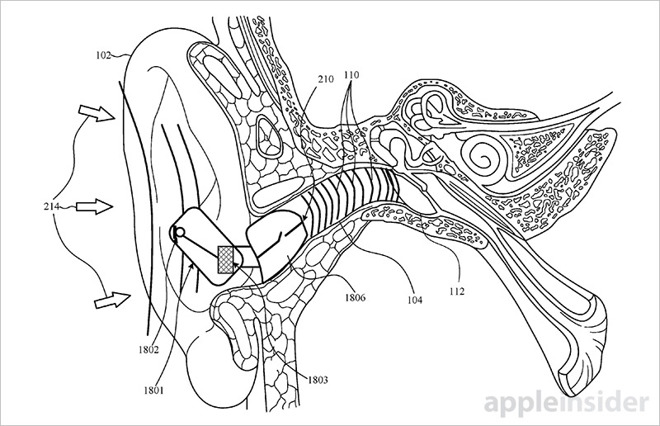A new patent application from Apple states that in the future it will be possible to use Selective Audio Pass-through for AirPods. The patent, entitled 'Headphones with a Hybrid Audio Translucency System', describes exactly how Apple uses a state-of-the-art noise cancellation system in which it is possible to drown out selective external sounds or, conversely, give them access.

This feature is already available in some high-end headphones from brands like Bose. However, the current implementation of this technology is based on the use of microphones and digital audio processing, which is still “raw” and is not suitable for wireless headphones with limited energy characteristics.
To get around this, a hybrid solution Apple offers the best of the two. As described in the patent, Apple suggests the use of an acoustic globe valve that can be opened or closed as appropriate. The valve will be driven by a motor, making this a difficult and risky decision. However, the implementation will help the headsets in question deliver excellent sound quality while maintaining exceptional energy efficiency.

The advantage of this valve is that it can be opened or closed depending on the situation. Apple proposes in its patent to use microphone data and motion data collected from a phone to determine when a valve should be opened or closed. One scenario calls for an air vent to open when the user is running so that they still know their surroundings. This will be determined by the motion data collected from the phone. The valve can also be used to regulate the pressure in the ear, which would be appreciated by people who fly frequently.
The patent also describes a sound amplification system in which a valve is opened, information about ambient noise is collected by an external microphone, such as your smartphone, and then processed and transmitted to users. There is also active noise cancellation, described in the patent, in which microphones actively filter out external noise using audio processing to provide better sound quality.
We may see that Apple implements some of the technologies mentioned in this patent in a future version AirPods. Given how difficult it is to create AirPods now, we don't expect this future to come anytime soon.
The patent application was first filed Apple in January 2016, and Scott K. Grinker was recorded as its inventor.
